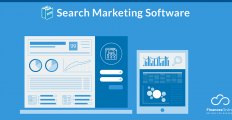
Credit: 5688709
The United States is still plagued with high inflation (8.3%) but the country’s consumers are feeling less pessimistic about the economy. This goes amid the Federal Reserve’s recent 0.75% hike in the benchmark interest rate to counter inflation. In a report by The Conference Board, it was revealed that the country’s Consumer Confidence Index rose from 103.6 in August to 108 in September, the highest it has been since April. This also marks the second consecutive month that the index increased.
Besides consumer confidence, the report shows that Americans are starting to feel more buoyant about the country’s business and labor market. The Present Situation Index, which accounts for how consumers view business and labor conditions, increased from 145.3 last month to 149.6. Similarly, the Expectation Index, which measures consumer outlook on business, income, and employment, jumped from 75.8 to 80.3.
September has been a month 0f partial recovery for the US business landscape based on the appraisal of consumers. According to new business networking statistics, 20.8% of consumers believe that the country’s business conditions are good, up from last month’s 19%. Likewise, the share of consumers who think that business conditions are bad dropped from 22.6% to 21.2%.
In addition, 49.4% of consumers believe that there are a lot of jobs available, far outnumbering the 11.4% who think otherwise. Meanwhile, 19.3% expect business conditions to improve, 18.4% anticipate an increase in their incomes, and 17.5% think that the number of available jobs will continue to increase. These figures represent a month-over-month increase, potentially dispelling recession fears.
So, why do US consumers bear a more optimistic outlook nowadays?
Dropping Fuel Prices, Rising Wages
Although the salary increases have not kept up with the inflation, employee incomes are rising nonetheless. Data from the US Bureau of Labor Statistics (BLS) show that the average hourly earnings of workers increased by 0.2%. More importantly, over 3 in 5 employees received an income boost this year. With Americans more apprehensive to spend given today’s interest rates, it is likely that workers are getting to save more.
Even more significant than recent wage increases is the considerable decrease in fuel prices. The prices of products from the energy sector have dropped across the board compared to last month’s rates. Based on BLS data, the price of gas fell by 10.6%, energy commodities by 10.1%, fuel oil by 5.9%, and the entire energy sector by 5%. The price drop for most of these goods started in July, with the rates running on a downward trajectory since.
The fuel price decrease has an effect on the rates of other goods since gas and oil are part of their production, from transportation to the processing of raw materials. Even though the prices of other consumer goods rose in August, the increase for most of these is below 1%. It could have been significantly higher if fuel prices weren’t sliding.
Today’s large number of job openings comes as another source of employee confidence. The latest available BLS data show that the US has 11.2 million job openings, a figure that has remained consistent through the high inflation period. Moreover, total nonfarm employment climbed by 315,000 last month while the unemployment rate remains low at 3.7%.
Of course, the US economy isn’t out of the woods yet as the inflation rate has barely moved and the risk of entering a recession is still high. However, consumers are finally receiving a bit of a respite from the effects of a suffering economy. If the country is to curb inflation in the long run, its consumers should learn to keep their money in their pockets. The good news is the money they get to keep has increased.






















Leave a comment!